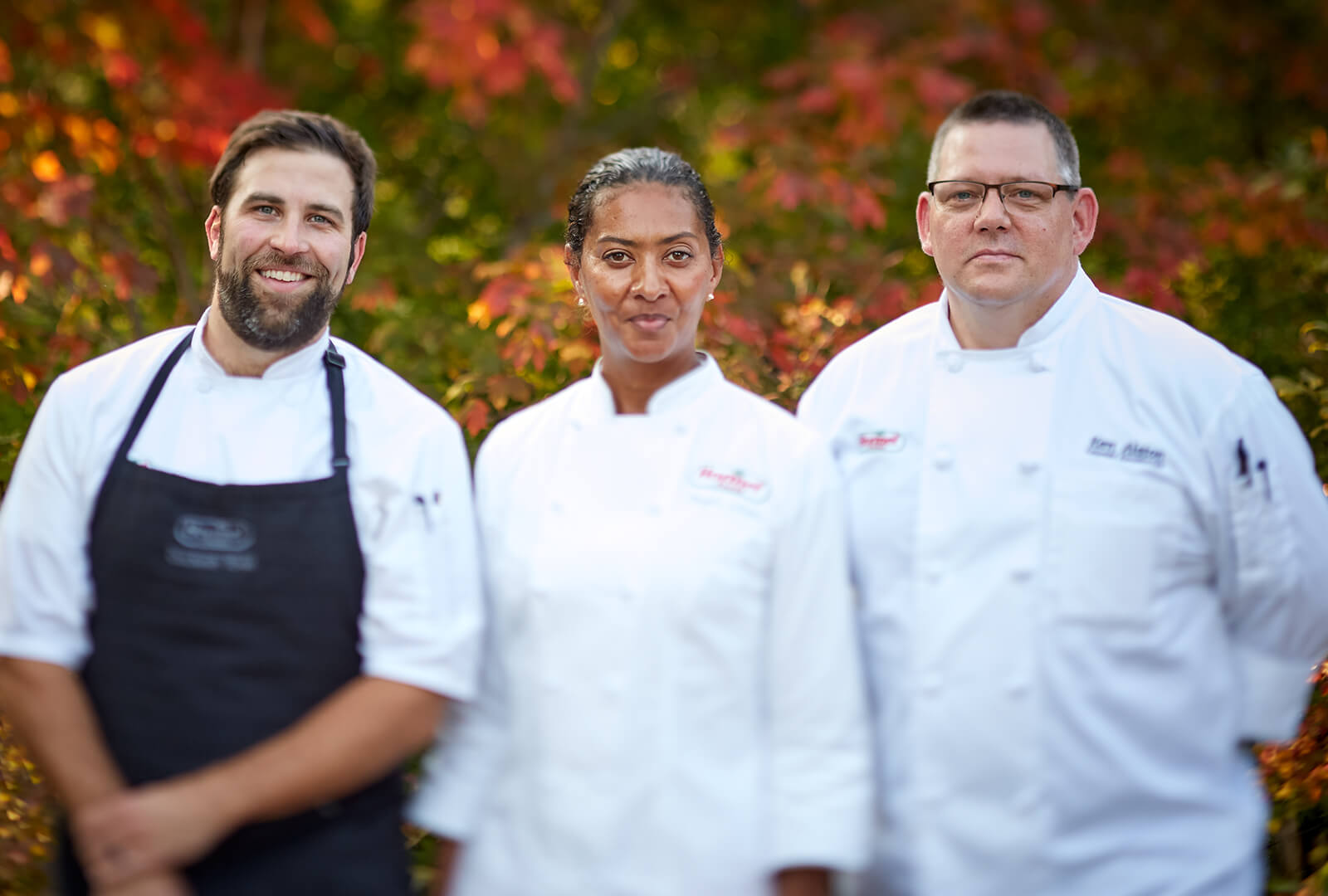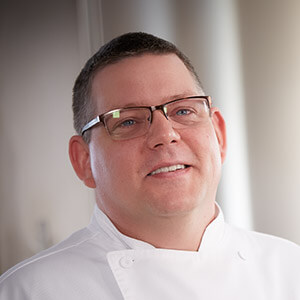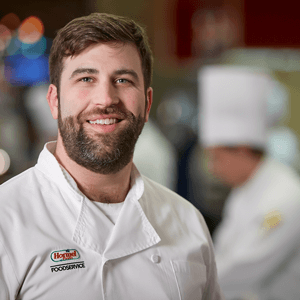Of all the phrases the prolific George Bernard Shaw turned in his career, perhaps this one rings truest: “There is no love sincerer than the love of food.”
Hormel Foods has understood that for more than a century. The company even employs professional chefs to serve as matchmakers, bringing the most delectable and irresistible products, recipes and meal ideas to those in search of true love.
Their jobs range from developing the products that find their way into our kitchens to teaching us how to make them shine for our family and friends, and the list goes on. We recently met with members of the band of Hormel Foods chefs to learn more about what they do for love.
The memories of the glitch are as vivid today as ever. But because no harm was done, the pair can laugh about it. In addition, Hormel® Fire Braised™ meats have been a shining example of what Hormel Foods and this development team do so well.
“The fun was to develop something new and get the idea sold to marketing,” Thomas says, adding that Hormel Foods has sold more than 10 million pounds of the product so far.
Not every project works that way, however. Each product is special and distinct. There is no cookie-cutter approach.
“Development at Hormel Foods is an art. Our value is in the center, between the absolute chef and the absolute scientist,” Chris says.
It’s not an ordinary undertaking for a food company, they insist.
“It’s pretty unique for Hormel Foods to have chefs and scientists involved from day one through production,” Thomas says. “We’re going to make 5,000 pounds of chili next month. We’ll be there from start to finish.”
A Chef’s Chef

Chef Tony Finnestad
One day last summer, a legion of corporate chefs from Marriott Worldwide came to Austin, Minnesota, to see – and taste – new offerings from Hormel Foods. Chef Tony Finnestad was at the ready, presenting six courses in an hour’s time. As the corporate chef for the foodservice group, he supports the chain businesses in particular, showcasing ingredients they may not have thought of or even known about.
“There’s no such thing as a typical day,” he says.
Fifty to 60 percent of Tony’s time is spent on the road, supporting the chain group and the company’s sales force of 130-plus people spread across 17 offices. Among other things, he creates recipes to support products and educates his team, including through an internal food blog called “Out to Eat with Tony.”
“My role here is fantastic,” he says, not missing for a minute the adrenalin rush of being in a restaurant kitchen night after night. His new job holds its own brand of excitement.
With a background in fine dining, he’s qualified to say that. Tony started out at 14 as a dishwasher at a county club managed by the mother of his childhood friend. “We got paid under the table and with leftovers,” he laughs. “All the fried mozzarella sticks we could eat. What could be better?”
The years that followed were filled with a string of successes and culinary positions of increasing responsibility throughout the United States, including the kitchen’s top spot: executive chef.
A desire to move “back home” and start a family – Tony and his wife grew up in Minnesota –nudged him toward Hormel Foods. They are now the parents of an 8-month-old daughter.
He’s reminded often of the old days.
“The peak was when I was in Jackson Hole. I worked 80 hours a week,” he says. “I absolutely love the industry, but I wanted a more stable lifestyle and a more regular schedule.”
What’s more?
“I enjoy the people I work with immensely.
Dinner is Served

Chef Ken Alston
As the corporate chef overseeing a historic property that is known simply at Hormel Foods as the Sales Cabin, Ken Alston operates what he likes to call “an internal restaurant.” In 2017 alone, he and his team handled in excess of 500 events, ranging from small gatherings of a dozen or so people to board meetings, hog roasts and retirement dinners of more than 100 attendees, a time-honored company tradition.
“We operate like a restaurant except that it’s for our guests and staff only,” Ken says. Instead, it’s a business that is built on reputation and trust. “At the end of the day, if we don’t have a good relationship with our ‘customers,’ we can’t make that sale. This building and what my team does are to help cement that relationship.”
Not all events take place at the cabin or even at Hormel Foods. Ken and fellow chef Tony Finnestad volunteered recently to conceptualize and stage a high-end dinner in the Austin community. The evening was designed to raise money and visibility for the traveling Vietnam Wall and Beyond the Yellow Ribbon, an organization that “connects service members and their families with community support, training, services and resources.”
Ken, who served with the U.S. Navy, sat down with Tony to come up with a plan for an event that would support military veterans. “We wanted to see grand things,” Ken says.
Like the company he works for, he is open about his dedication to veterans of the armed forces. Ken can trace his family’s military service back to the U.S. Civil War and even the American Revolution. His father was a World War II veteran who was later confined to a wheelchair. That made it necessary for Ken and his sisters to pitch in and help with the household chores, including lending a hand with the cooking. He liked it well enough that when he was 16, he went after a job as a dishwasher.
“The chef I was working for began to give me other things to do,” Ken says. “He saw I had a knack for it.”
Thirty-five years later, Ken’s passion and inspiration are still going strong.
Looks Good Enough to Eat

Chef Angela Sellers
Making food look as delicious in pictures as it does when it’s in front of you is an art form that Angela Sellers knows well. As a chef who was trained at the Culinary Institute of America, Angela worked in restaurants before securing a position with Martha Stewart as a recipe developer. She soon landed at Southern Living magazine, where she tested and developed recipes and styled food for photos for 11 years.
Based in Austin, Minnesota, Angela is a member of the creative team that makes up Studio H, the in-house design studio of Hormel Foods.
“I develop recipes for the various brands of Hormel Foods,” she says. In other words, the recipe suggestion on the Mary Kitchen® corned beef hash package may well have Angela’s stamp of design and approval. In addition, she probably had a hand in making it camera ready.
“I’m the food stylist for about 85 percent of what’s shot in the studio,” she says.
Her job puts her in the local grocery stores on a daily basis, picking up ingredients. She says it keeps her in touch with the people who are using Hormel Foods products.
“It’s helpful to see if package sizes have changed, and what’s easy (and hard) to find,” she says.
Given her Southern roots – Angela was born and raised in Alabama – one has to ask the weather question.
“Minnesota winters are harsh,” she says. “But summers in the South are much more uncomfortable. My family is in Birmingham, but I’ve found a home in Minnesota.”




